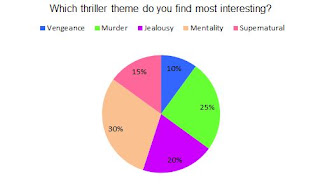Settings and iconography
The thriller opening will take place in a bedroom; a real life situation allowing the viewer to relate to the events. The second part of the opening sequence will be filmed in the bathroom. This is conventional to the genre due to the involvement of mirrors. The space being confounded also conveys the character as being trapped and unable to escape from fear.
The most prominent iconography will be the phone and laptop,both a symbol of communication with the outside world. When the communication is disrupted the character will be seen as as helpless and vulnerable. Although the setting isn't isolated, it will seem like the character is isolated from the outside world due to the lack of communication devices and so more prone to danger.
A mirror will also be one of the main iconography used. It will allow a reflection which can present a sudden view of the antagonist without revealing identity as well as presenting two sides to a character. In order to emphasize the antagonist's presence without revealing his identity, a shadow of his hand will also be shown grabbing the character. This is conventional to the genre as it involves mystery and suspense as to who this character is.
Costumes, hair and make-up
The victim will be dressed in white , the colour white having a connotation of innocence and purity and therefore presenting the character's vulnerability. The calmness of this character will be disrupted by fear which will be shown by black mascara running down the character's face. This being a symbol of tears also connotes the pain of fear. The make-up worn by the victim will consist of pale nude colours to achieve the essence of purity. In general, the victim will be a 'normal' person wearing everyday clothing which is a convention of thriller films.
The purity of the character presented as a victim will be contrasted against the antagonist. Although this character is the antagonist, he posses interior mental problems that would not be necessarily be shown by the exterior front. However the character will be dressed in dark which has a connotation of death. Furthermore, throughout the opening sequence, the antagonist will be a hidden identity which connotes mystery and suspense. Not knowing being a commonly seen convention within the thriller genre.
Lighting and colour
Throughout the sequence, low key lighting will be used to create tension as the audience tends to fear of the unknown. This is due to darkness creating an eerie atmosphere; the night being conventional to the thriller genre. The darkness also enables shadows which is also a convention that promotes the unknown. A prominent use of lighting will be demonstrated by the laptop screen light coming suddenly turning off, suggesting the presence of the antagonist.
The credits used in the opening sequence will involve black and white colours. The lettering being black on a white screen will reflect the character typing on the keyboard. This will interweave the credits with the narrative as well as being being a convention of thriller films by presenting the antagonist vs. the protagonist.
Facial expressions and body language
Facial expressions will be used to present fear felt by the victim. This will emphasize the emotions felt by the character which allows a connection between the character and audience to be formed. The character showing signs of panic and anxiety will heighten the impact of the opening sequence on the audience by being more intense and dramatized. The general and conventional facial expressions that will be captured will be fear and hesitance when the character moves rooms while checking for an unwanted presence.
Body language is the physical ability of human non-verbal communication which is interpreted subconsciously by the audience. This will enable to present the character in a certain way. The victim will be displayed as vulnerable and fragile by a weak posture and a less steady, almost clumsy movement.
Positioning
The most significant positioning that will be used will be the shot of the victim holding the phone which will illuminate her face as it will be the only source of light when everything else turns off. The lighting being white will emphasize the purity of the character which is associated with light colours. The scene where the shadow of both the victim and obsessor will be seen is another prominent example of positioning. This will involve the shadows being positioned in the centre of the frame emphasizing the events in that scene as the viewer cannot focus on anything else.
 The poster comprises of many significant elements used for a greater impact of promoting the film. A mid shot of Liam Neeson's character is seen; yet is not clearly shown due to the dark shadowing. It blends into the black background thus creating mystery as his facial expressions cannot be seen and therefore the emotion he is experiencing cannot be identified. The character being the central image allows the audience to establish Neeson's role as fundamental; the sombre atmosphere portraying him as the protagonist. Him being a man that is powerful is conventional to the thriller genre.
The poster comprises of many significant elements used for a greater impact of promoting the film. A mid shot of Liam Neeson's character is seen; yet is not clearly shown due to the dark shadowing. It blends into the black background thus creating mystery as his facial expressions cannot be seen and therefore the emotion he is experiencing cannot be identified. The character being the central image allows the audience to establish Neeson's role as fundamental; the sombre atmosphere portraying him as the protagonist. Him being a man that is powerful is conventional to the thriller genre.


















